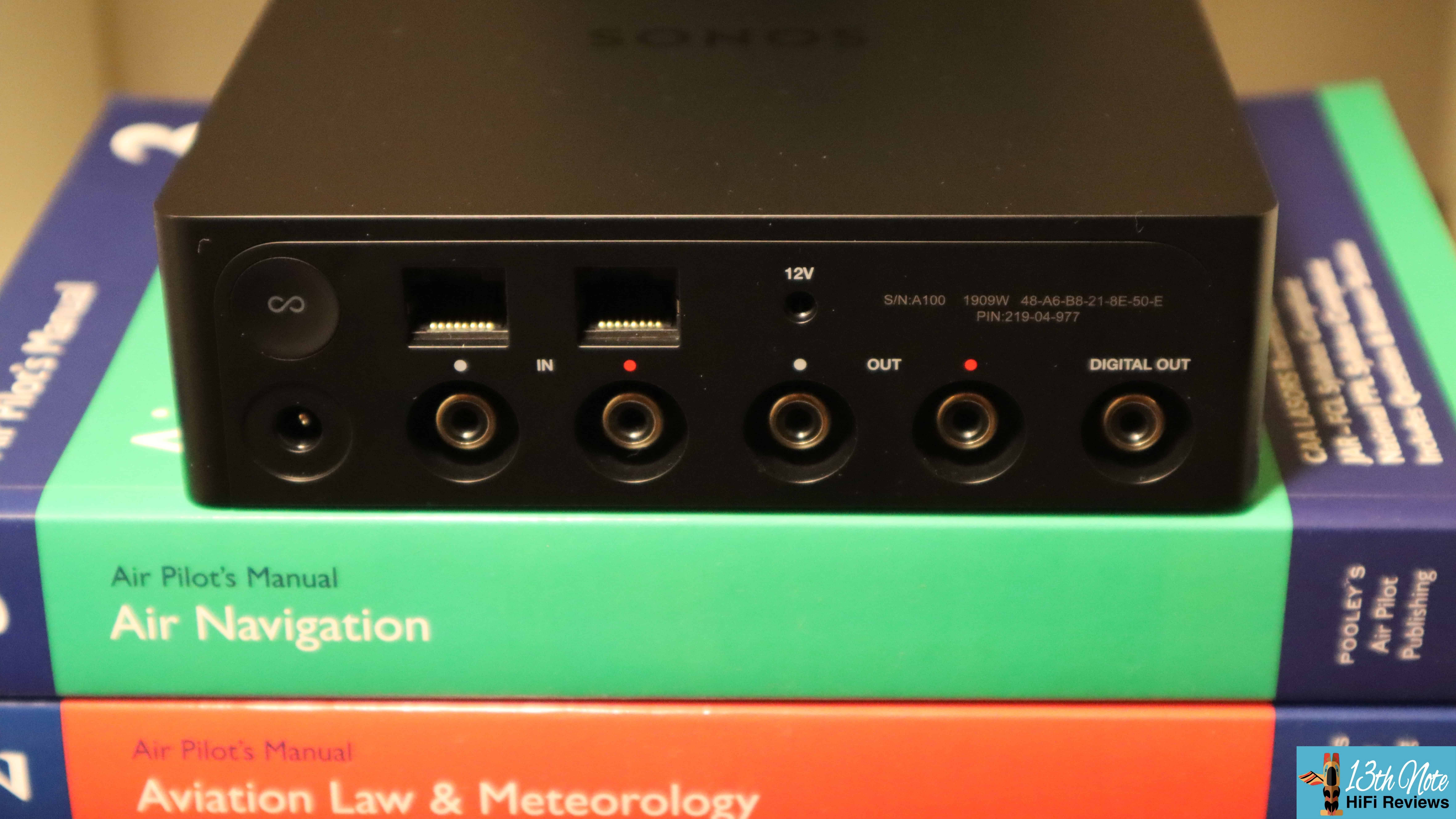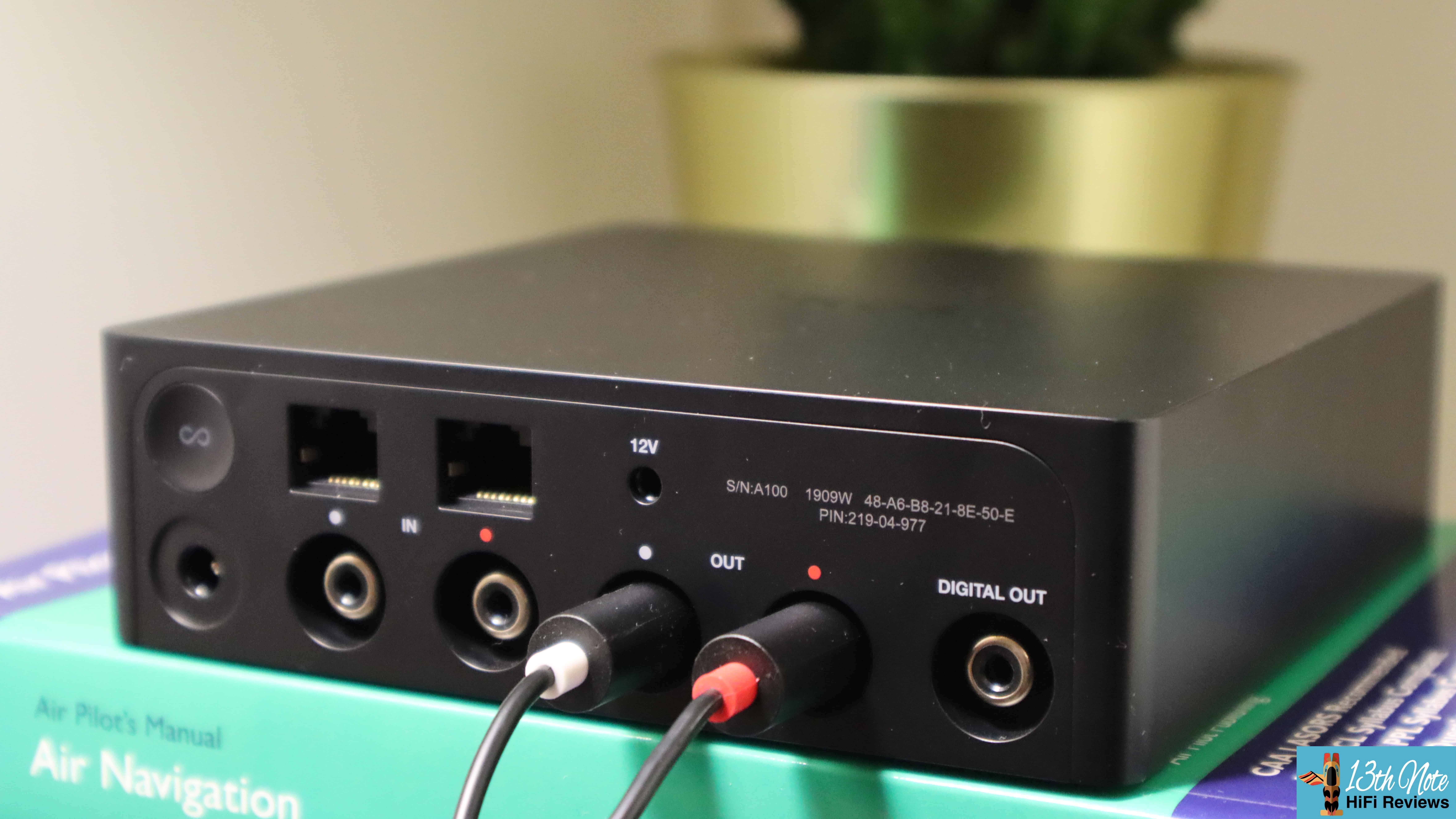When I was back there new to it all, there was a person who put forward the proposition that you can petition HiFi as being *better* the more expensive it is. In fact lots of people – and Jim Morrison would probably not have approved, such was the state of audio consumption in his world. What of the Sonos Port ?
As soon as you mention relatively cheap streaming products it’s easy to get all snobby about it – “My HiFi is considerably better than yours…” in a Birmingham accent with Harry Enfield amusingly ringing in my ears. It can be one of the least important parts of the chain but equally pretty important. But casting aspersions before the dough has risen is not wise in audio…
In 2008 Sonos introduced the ZonePlayer90 streamer which became the similarly looking re-badged Connect soon thereafter. Streaming was at infant school and in dealer showrooms all these little white boxes were placed with the least and most expensive HiFi. Perhaps odd nowadays but as a new fad in audio, impressing that ‘I have to have one’, I surely did.
Sonos has always had broad reach. As much as suiting a reasonable budget, this brand is also great for those with deeper pockets, but who hate faffing and want convenient performance at a good price. I remember once helping a relative buy a car in a very affluent suburb to see Sonos devices everywhere in the sellers £2m-ish house – amusingly the ladies name was Mrs Worth.
Everything advances
It didn’t take long for others to get into their stride ; Innuos, Auralic, Aurender etc…. matching the demand for newly packaged ways of consuming music when Spotify took ground in 2009.

Fazed out in 2019, the white Connect is now dead but replaced by this matt-black soft touch Port, introduced late 2019. An axiomatic kitchen mallett has been taken to the Connect to turn it into its more palatable proportions. Still a streamer to add to your existing HiFi with a digital to analogue converter (DAC). spitting analogue audio to your amp. Alternatively using its coaxial digital output to your own DAC, but loosing the optical digital output the Connect had. A tad galling if you are short of input connections.
The Sonos Port still uses analogue inputs, so as Sonos say, you can “bring your turntable, CD player, or other audio source into the Sonos ecosystem”. That was a cool thing with the Connect, put your CD music on and mesh it to one of your other Sonos speakers. By the way, hoovering with Disco mode on is a lot more fun than ‘fazing out’ of audio zone reach to a single source. But what Sonos does so well is sync so precisely between devices that you’d have to have the ears of a robot to detect any delay. Unlike the Google infrastructure with Chromecast devices like a Cyrus ONE Cast, *relatively* the delay is like a badly pirated copy of The Terminator where Arnie has already said “I’ll be back” before he has.
A nice touch with the Port over the Connect, is that you can use its 3.5mm trigger output to turn on your amplifier, if your amp correspondingly has a 3.5mm socket. Although a suitably wired up connection conceivably might be possible (eg RS232 serial interface). This means your amp turns on whenever the Port starts playing audio, so unlike having to turn your HiFi on like a helicopter, this feature is always useful.
The Port is ‘WiFi-able’ and can be connected by fixed Ethernet too – of which there are two Ethernet sockets. No idea why if I’m honest, but I didn’t find any drop outs over WiFi which surprisingly can happen on some expensive streamers.

The app is one of the best in the business which is always Sonos’ forte ; internet radio, Airplay 2, about every streaming service on planet earth, and firmware updates over WiFi. The alarm feature for playing music from your streaming services or library is great. Regrettably this is not a Roon ready device so you can’t add it as a network ‘end point’ player to play music from a Roon network drive.
I tied my Google Voice Assistant Nest Mini speaker with Sonos to allow voice commands. Fad or not, it is good to get going with playing music before your tablet or phone comes out. For instance connected to some powered speakers like Totem’s KIN Play.
You add your music from your NAS (network attached storage) drive in ‘add shared music folder’ in settings. I had to do a bit of googling to find the correct path structure of my drive on the network (\\MyBookLive\Public\Music). This is a bugbear, as manufacturers ought to make this process simpler. I’ve spent many hours putting in different permutations of network structures ; forward slash this, backslash that – it gets annoying after a while. Sonos could sort this with automatic detection of the network drive perhaps?
The original Connect could only handle music to 48khz and 16bit, in all practical terms just above the quality of CD’s 44.1khz/16bit. This is fine if you are only ripping CDs to your network or downloading most content online, but we are in 2020! Hi-res PCM file format music and DSD is more common, and why Sonos has not catered ‘full fat’ is not very clear but one wonders if it looses them market share? The Sonos infrastructure won’t even downsample hi-res too?

Whether it’s a disadvantage in terms of musical enjoyment – I’d say no, as it’s down to what your DAC does with the music file more than anything. But not to have the flexibility to play ‘chunkier’ music files, the likes of which Bluesound can cope with, is an annoyance. It makes the Sonos Port appeal to the novice Audiophile only just getting into streaming. But for $449 or £400 it’s a reasonable price too considering some cheaper alternates eg Yamaha Connect streamers like the WXAD10 (around $100/£100). But bear in mind you are paying for the software development with Sonos, and the great App.
Sonically astute
With the Sonos Port, one of the most obvious changes to the Connect is a richening of the sound. We’ve gone from the economy food range to premium. “This is not just any ordinary sausage”, and all that…. very welcome, since the Connect was a bit gaunt in its harmonic approach. It got criticised for being jittery, whether fair or not. With Port, there is more of an assuredness in the midrange and upper midrange but with a very nice balance that is easily listenable and sure-footingly tonal.
In both test systems, I tried the Sonos Port over WiFi against an Allo DigiOne Signature streamer ($315) as a Roon end point with an Allo Shanti dual linear PSU ($149). You can connect the Shanti to both of the DigiOne’s power inputs – unusually it uses different power sources for the top electrically ‘clean’ board to which the digital output is attached, and the bottom ‘dirty’ Raspberry Pi (a type of mini computer) on which it’s based.
Even with the Shanti, for near enough the same money the Allo translates a deeper sound with a delicacy that, cliched maybe, just takes you ‘further into the music’. In comparison the Port is a narrower, reigned in confined sound and less accurate. That said, I found the Allo a better proposition if you already use Roon, simply because the Allo’s otherwise necessary use of third party software/apps for control-ability isn’t needed, nor are they the best relatively speaking – at least the Volumio interface isn’t. And Roon has it covered as app interfaces go too. So the Allo might take the lead on sound quality but, if Roonless, it’s not in the league of Sonos’ ease of use ** (** I haven’t tried the other Allo interfaces admittedly). A question of priorities – sound or interface?

The Sonos app has more in common with Yamaha’s Connect App in use, with the likes of a $350/£300 Yamaha WXC-50 streaming pre-amp. But sonically the Yamaha is noisy by being grainy and gritty, translating into a relatively compressed and less clear sound. Electrically noisier.
Against my Innuos Zenith mark 2, a reference in my system, you can tell the Sonos Port has less micro detail in the treble. Reduced depth and width perception and a less delicate sound to boot. Also more compressed, but hardly surprising with a five times price multiple. But for the performance the Port is very much VFM. We are talking relatively small changes with the comparisons I’ve made between the Allo and the Port ; I certainly found the comparables on test system 1 (see below) were more marked than test system 2. Unsurprising due to differences in resolution between these systems.
So OK, the Sonos Port doesn’t provide for Hi-Res….But if you want a streamer to add to your HiFi, you value a great App, and you are coming at streaming from ripping a CD collection and/or use with other Sonos speakers and streaming services, a good proposition. Recommended!
Sonos Port Specifications
- Inputs : RCA line in (playing CD / Turntable over network), 2 x Ethernet
- Outputs : Coaxial Digital to DAC, RCA line level output to Amp, 12v trigger switching control
- Network Connection : WiFi and Fixed Ethernet
- Voice Control : Google Voice Assistant, Amazon Alexa
- Streaming Services : Apple Music, Amazon Prime Music, Spotify, Tidal, Qobuz, Deezer etc
- File compatibility : MP3, MP4, M4A, WMA, AAC, OGG, FLAC, ALAC, AIFF, WAV
- Supported bit depth / Sample rates : 16 bit, 16khz-48khz PCM
Price
$449/£400
Manufacturer Details
Sonos
Web : www.sonos.com
Contact : https://www.sonos.com/en-gb/contact (from UK)
Test Systems
- PMC twenty5 23 speakers, Cyrus DAC XP signature pre amp with PSX-R power supply, Cyrus Mono X200 power amps, IsoTek Aquarius, Chord Qutest DAC, Innuos Zenith Mark 2, Allo DigiOne Signature Streamer, Yamaha WXC-50 streamer
- Totem KIN Play Active speakers, Isotek Aquarius, Chord Qutest DAC, Allo DigiOne Signature / Yamaha WXC-50 / Innuos Zenith mark 2.








